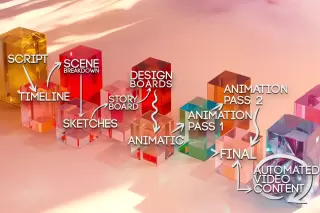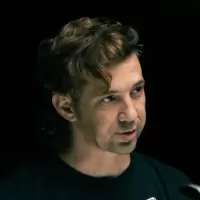A Proper List of Deliverables for Explainer Animations
Deliverables = Process. If the Deliverables list is light, then the process is gonna be, well.....
In an animated explainer video, the list of deliverables tells you everything you need to know about the client experience you can expect to have.

Wes Kennison
![]()

By Wes Kennison
3 min read
2D animated explainers are a mainstay in commercial and corporate video content, if you actively invest in this type of content, this post is a lens for you to gauge whether you’re getting the most out of the process.
An experienced team knows how to make your client experience seamless and collaborative by offering a robust and well executed process.
In other words, animated content is complicated, so if you’re doing it with a small team or solo freelancer, establishing guardrails of staged deliverables can make the process smoother and more dependable for all parties.
I’m going to use this article to detail some explainer best practices, all garnered from years of doing it the wrong way and figuring it out along the way. So, if your deliverables list from your animation team doesn’t look like this, well… 🤷🏻♂️
Without further adieu, here we go.
Every project needs a road map. I’m a GANTT guy but deliver this however you need it, spreadsheet, calendar view and invite, whatever….
Arguably the most important step in establishing the flow, pacing, and volume of artwork that must be created, this step is crucial in transitioning copy into a moving image. For us, the breakdown takes the form of a 2 column that also has scene numbers attached to each, which are the scaffolding for the storyboard, and follow each scene all the way into After Effects. Equally important, the scene numbers allow everyone involved to have a specific language for the sequence, this shorthand is INVALUABLE in building out the visuals collaboratively and making the gray area of building out the artwork less daunting.
We always sketch our story ideas first. Sometimes it’s taking a step back to identify what the concepts are that we need to visualize then sketching those, sometimes it’s sketching out the scenes directly, either way this sketching process is critical to iteration and arriving at uniquely useful illustrated concepts.
Once we’re happy and aligned on the conceptual form the art will take. We plug the Sketches into the Scene Breakdown and make a buttoned up storyboard.
Once approved, we pick 5 key scenes and begin the process of art direction. This will encompass type treatments, color pallettes, and the design or illustration style we’ll be creating.
This is the process of building out the sketches as vectors, based on the style frames.
We hear the voiceover and music for the first time here, as well as blocking in our motion concepts for the piece.
We've spent weeks and weeks getting to this stage, now we're making everything move and flow together. The animation is unique to the many facets of the story being told that we've been shaping with the previous steps. We get the project to a 75% completion state here.
We revise the motion in the piece based on any feedback that may have come in and deliver a 98% complete product at the end of this stage.
In the pass we typically go through do a final polishing pass on all the keyframes and ensure that motion design matches the graphic design/illustration in it's intention and execution, if there's a Director's cut we will finalize that in this stage too.
AND THEN: We have a proprietary video automation tool, we call it iterator, and it allows us to take these assets and wrap them up in an interface that YOU the client can use to create additional content that looks like the explainer you’ve invested in. This is proprietary thing that we do, so if you’re at an agency and looking to win the work, this is a great way to distinguish your proposal from any others.
An experienced team knows how to make your client experience seamless and collaborative by offering a robust and well executed process.
In other words, animated content is complicated, so if you’re doing it with a small team or solo freelancer, establishing guardrails of staged deliverables can make the process smoother and more dependable for all parties.
I’m going to use this article to detail some explainer best practices, all garnered from years of doing it the wrong way and figuring it out along the way. So, if your deliverables list from your animation team doesn’t look like this, well… 🤷🏻♂️
Without further adieu, here we go.
